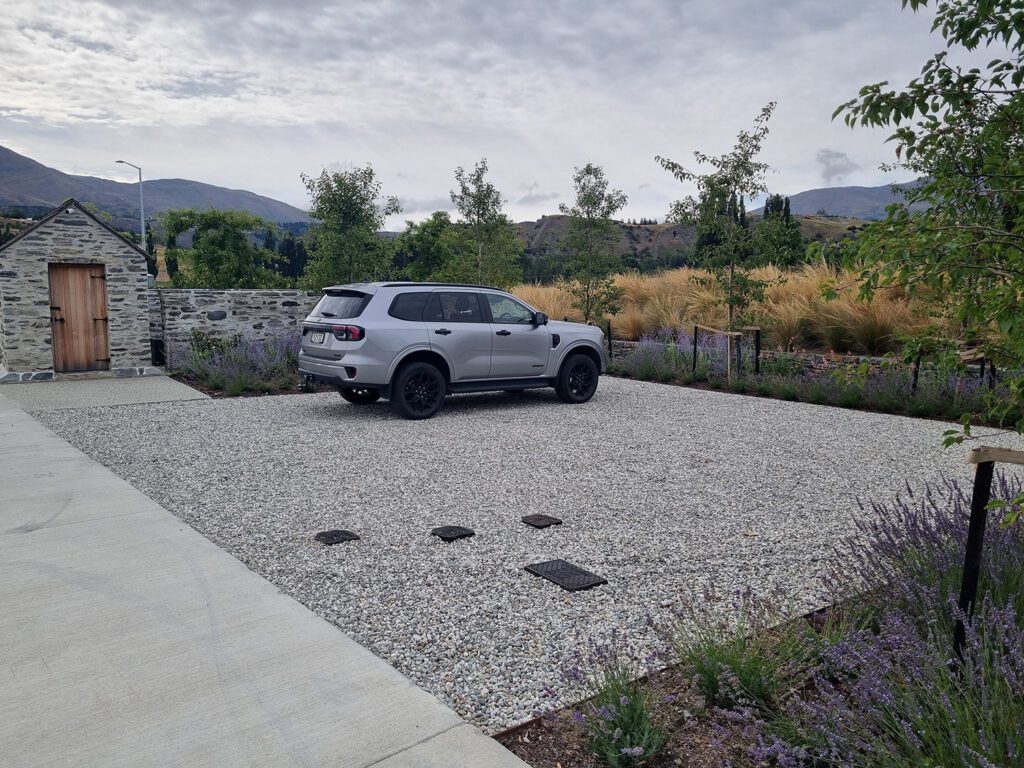In New Zealand, homeowners, landscape designers and builders often grapple with the challenges posed by ageing driveways. Cracks, pooling water and uneven surfaces not only detract from a property’s aesthetic appeal but also pose safety hazards. Plus, there’s a common acknowledgement that traditional materials like concrete and asphalt, while common, do not offer the environmental benefits desired in today’s climate-conscious world.
With increasing awareness of sustainability and the impacts of climate change, there’s a growing demand for driveway solutions that are both durable and eco-friendly. Modern materials and techniques now provide alternatives that address these concerns, offering homeowners and professionals options that align with both functional needs and environmental values.
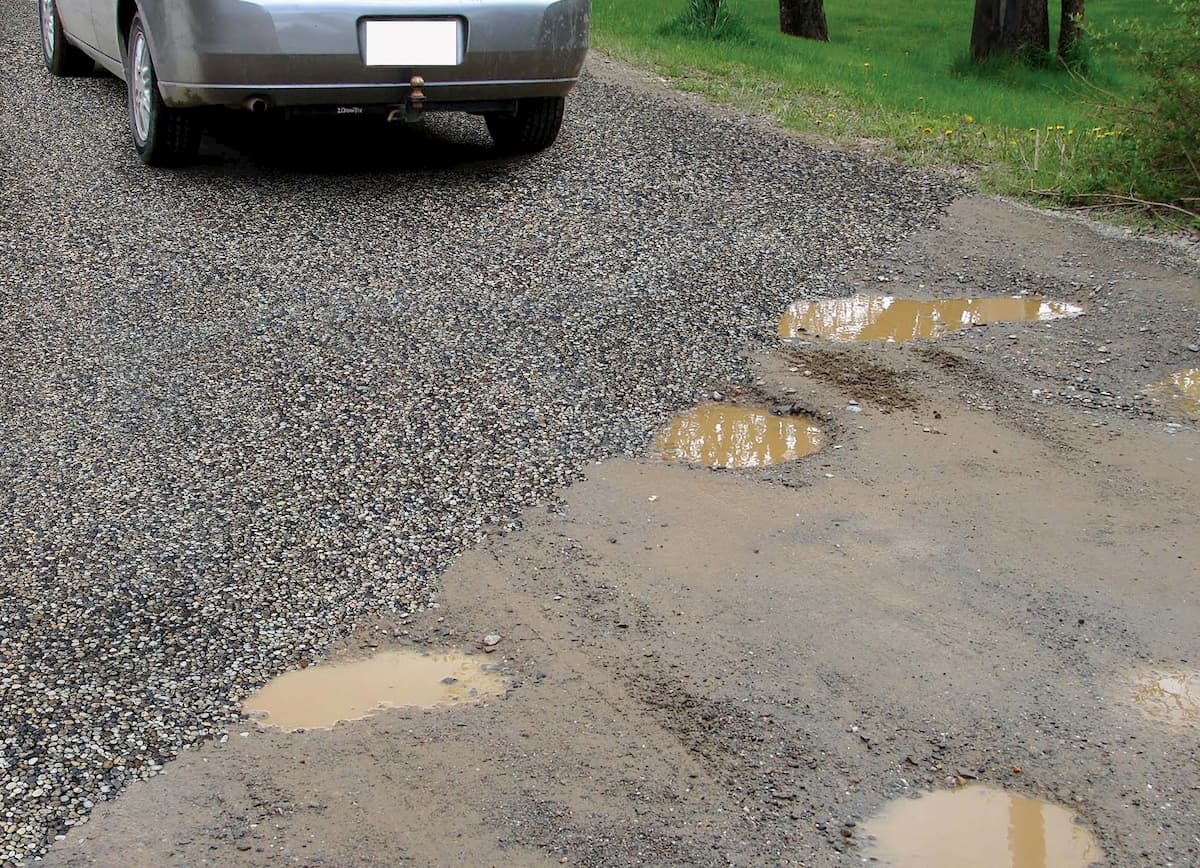
In this blog, we’re going to explore the most common driveway problems in New Zealand, compare traditional and modern solutions, and highlight the benefits of sustainable, permeable paving options like PebbleLock and SurePave. Whether you’re repairing, upgrading, or starting fresh, you’ll find practical ideas to future-proof your driveway.
Common Driveway Problems in New Zealand
New Zealand’s unique climate and landscape create a tough environment for residential driveways. Heavy rainfall, shifting soils and temperature fluctuations all contribute to a range of problems that affect both the look and functionality of the surface. Many driveways, especially those built 20, 30, or even 40 years ago, were constructed using outdated materials and practices. These older methods often neglected proper drainage design or subsurface preparation, leading to issues that become more visible and severe over time.
One of the most noticeable concerns is surface damage, including cracks, potholes, and pooling. These issues not only make the driveway look neglected but can also pose real safety hazards such as tripping risks for pedestrians, tyre damage to vehicles, and slipperiness during wet conditions. Pooling water can lead to the growth of moss and algae, making surfaces slick and unsafe, particularly on sloped or shaded driveways. Potholes can develop from repeated water ingress and traffic stress, creating uneven surfaces that can twist ankles or damage undercarriages, not to mention it just looks unappealing.
Fortunately, driveway construction has come a long way. Today’s best practices involve not just updating the surface material, but also properly preparing the subsurface by using stabilising layers, better drainage systems and more suitable base materials. These modern methods significantly increase the lifespan of a driveway and reduce ongoing maintenance costs. For anyone considering a replacement or upgrade, it’s worthwhile exploring these newer approaches to ensure your driveway is built to last.
- New Zealand’s climate and terrain lead to common driveway issues like cracking, potholes, and pooling.
- Many older driveways were built with outdated materials and insufficient preparation, resulting in long-term problems.
- These issues can create safety hazards for both vehicles and pedestrians.
- Modern construction methods offer more robust, long-lasting solutions—starting from the subsurface up.
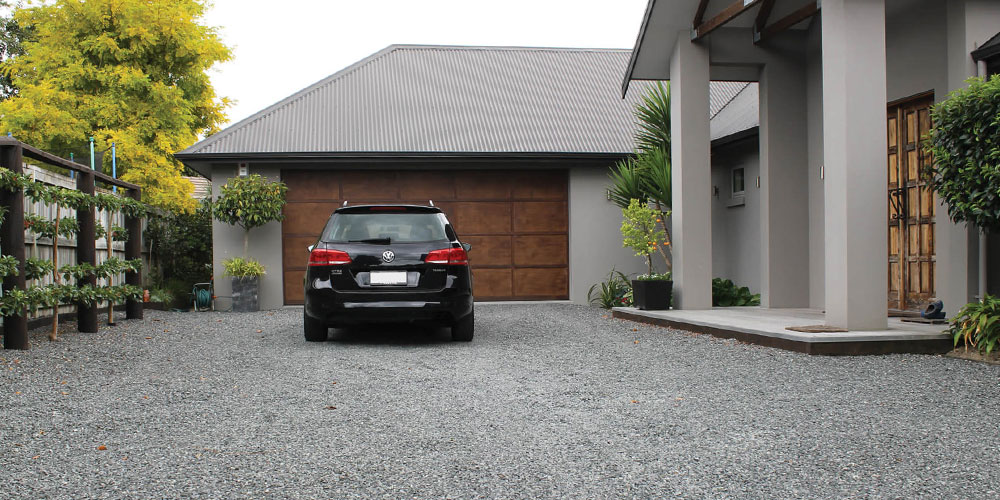
Exploring Modern Driveway Materials and Practices
When considering driveway upgrades or new builds, it’s important to think beyond the surface. While materials like concrete and asphalt are still widely used, they’re no longer the only options available. These traditional surfaces are impermeable, which means they don’t manage water well and are more susceptible to cracking over time. In contrast, modern materials such as permeable paving systems offer longer-lasting, more environmentally considerate solutions.
But it’s not just about what goes on top. Modern driveway construction also pays closer attention to what lies beneath. Ground stabilisation techniques help ensure a solid foundation by using geogrids, compacted aggregate, or stabilised base layers to prevent subsidence and rutting. Water management is another key improvement, where properly layered systems work in harmony with the natural environment. Instead of redirecting water off the surface (and often into stormwater drains), modern driveways are designed to allow water to infiltrate through, reducing runoff and erosion. Scour protection (preventing water from washing away soil or gravel) is also more effective with permeable paving, as waterflow is absorbed within the driveway and the pebbles or stone surface is locked in place, keeping the surface stable and functional during heavy rain.
Better drainage options, like sub-surface soak pits or distributed retention areas, can now be integrated more easily, especially when using permeable solutions. These systems help spread the water load more evenly and reduce long-term wear. The result is a driveway that not only looks good but works better and lasts longer.
- Modern driveway options go beyond surface materials to include improved building practices.
- Ground stabilisation and layered base construction prevent sinking, shifting, and cracking.
- Water management, scour protection, and effective drainage are essential for long-term performance.
- Permeable systems make it easier to integrate these features naturally and effectively into any driveway design.
Sustainable Driveway Solutions for Long-Term Value
One of the most practical and environmentally responsible driveway options today is the use of permeable pavers. Unlike traditional concrete or asphalt, which forces water to run off the surface, permeable paving systems are designed to let water pass through, helping to manage stormwater naturally and reduce pressure on drainage systems.
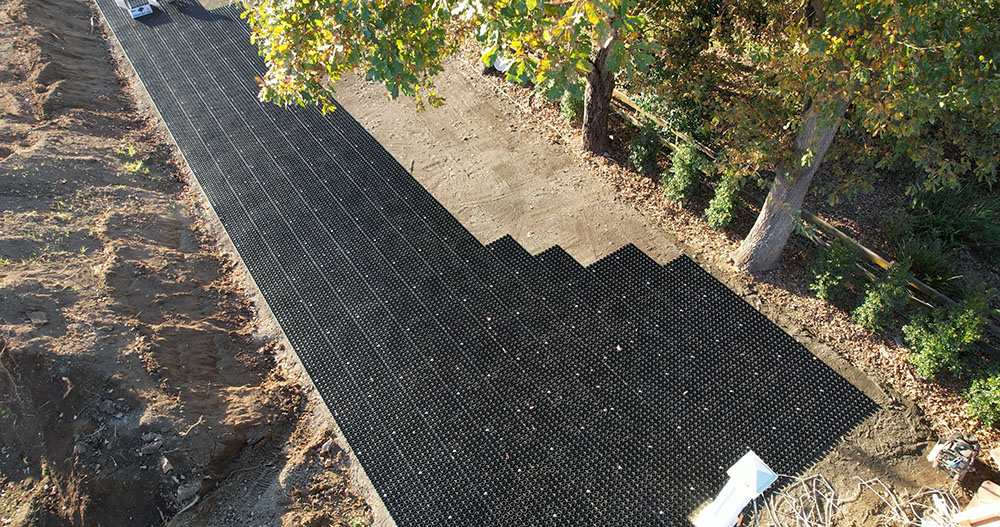
These systems are constructed in multiple layers, each performing a critical function. At the base, a geotextile fabric is laid over the flattened subsoil to separate soil from the aggregate above and prevent soil migration into the drainage layer. Effectively, this is the first step to preventing potholes and rutting from forming on the upper layers. On top of this sits a layer of compacted drainage aggregate, typically made from clean, angular stone. This layer provides structural support and creates space for water to flow and soak into the ground. The final layer consists of interlocking plastic pavers such as PebbleLock or SurePave, which are filled with grass, decorative pebbles, or compacted gravel. These pavers lock the surface material in place, preventing displacement while maintaining full permeability.
Permeable pavers control water at the source, allowing rainfall to pass through the surface, filter down through the layers, and slowly return to the groundwater table. This approach reduces runoff, helps prevent flooding and erosion, and can even filter out pollutants as the water moves through the layers.
Let’s take a closer look at two of the most popular options:
PebbleLock
- A robust plastic mat ideal for stabilising decorative gravel or pebbles.
- Perfect for driveways, garden paths, and light-use parking areas.
- Offers a clean, natural finish without the mess or movement of loose gravel.
- Especially well-suited to residential applications where appearance matters just as much as function.
SurePave
- A high-strength grid suitable for heavier traffic, including vehicles and trailers.
- Made from recycled plastic, it offers excellent load-bearing capacity while supporting full permeability.
- Commonly used in rural properties, public spaces, and any area where heavy use meets environmental sensitivity.
- SurePave can also be covered in grass to give a natural, green environment, ideal for parking bays where you want to maintain a grassed area.
Both systems are easy to install. They require minimal specialist equipment and are simple to maintain, as individual pavers or sections can be replaced if needed. They’re also flexible in design, allowing you to choose from different surface finishes (gravel, grass, or decorative stone) to suit the look of your landscape, or can simply be lifted up and your driveway reshaped, using the same materials.

Because they combine performance, durability and adaptability with low maintenance needs, permeable pavers are a truly sustainable long-term solution. They reduce environmental impact without compromising on style or strength.
- Permeable pavers allow water to pass through, helping to manage stormwater naturally.
- Built in layers, the driveway design will include geotextile fabric, drainage aggregate, and interlocking surface pavers.
- PebbleLock is ideal for decorative gravel surfaces; SurePave is better suited for heavier loads or stabilised grassed surfaces.
- Easy to install and maintain, they offer lasting sustainability, design flexibility, and long-term value.
Climate-Responsive Design: Why Permeability Matters
As New Zealand experiences more frequent and intense weather events, the way we manage water on our properties is becoming increasingly important. Traditional hard surfaces like concrete and asphalt are impermeable, meaning water can’t pass through them. When rain falls on these surfaces, it runs off quickly, often carrying with it soil, oil, leaves and other debris. This runoff flows into stormwater drains, which are typically designed for moderate water flow and basic filtration.
Over time, this excess runoff can overload stormwater systems, particularly during heavy rainfall. The debris it collects along the way can clog drains and culverts, reducing their capacity to handle water effectively. When the system becomes overwhelmed, the result is localised flooding, damage to infrastructure, and even contaminated waterways. Additionally, fast-moving runoff causes erosion in garden beds and along paths, undermining the stability of nearby surfaces and landscaping.
Permeable paving systems offer a smarter alternative. Instead of pushing rainwater away, they allow it to filter naturally into the ground through layers of stone and stabilised fill. This slows the flow, reduces peak water volume entering drains, and removes sediment and contaminants in the process. By replenishing groundwater supplies, permeable driveways also support long-term water sustainability, which is especially important in regions facing seasonal droughts.
Beyond function, permeable driveways also help regulate surface temperatures. Unlike concrete and asphalt, which absorb and radiate heat, permeable surfaces stay cooler and reduce the ‘heat island’ effect often experienced in urban and suburban areas.
- Traditional hard surfaces push water into drains, often overwhelming stormwater systems.
- Runoff collects debris and sediment, leading to clogs and increased flood risk.
- Permeable paving slows and filters water, helping it to naturally absorb back into the ground.
- These systems support groundwater recharge, reduce erosion, and help manage urban heat.
Application & Inspiration
One of the most versatile aspects of permeable paving is that it doesn’t need to replace concrete or asphalt entirely. It can be used in conjunction with traditional materials to create a driveway design that is both visually appealing and functionally effective. This approach gives homeowners and landscape designers more freedom to create layouts that suit their specific site conditions, personal style and sustainability goals.
By understanding how permeable systems function, with layers that absorb, filter, and slowly release rainwater, it’s easy to see how they can be strategically integrated into a broader driveway layout. Rather than simply covering an entire area in solid paving, combining materials allows for intentional water management. For example, placing permeable sections along the edges or in lower-lying areas can collect and filter runoff from nearby hard surfaces, helping to prevent pooling and erosion while creating a more dynamic and textured appearance.
Here are six design ideas that use PebbleLock, SurePave, or a hybrid of permeable paving with concrete or asphalt to create modern, sustainable driveways:
- Framed Permeability
Use a concrete driveway with PebbleLock borders to frame the space and direct water toward the permeable edges. This reduces runoff while adding a decorative gravel or pebble feature around the driveway.
- Central Strip Solution
Install SurePave in a central drainage channel running down the middle of a wide concrete or asphalt driveway. This manages water in the lowest area without altering the full surface and adds a unique design element.
- Ribbon Driveway
Create a dual-track driveway using SurePave under grass or gravel for the tyre tracks, alternating with a green or pebbled areas in between. This is perfect for rural or coastal homes, increasing the amount of green space while creating a fully permeable surface across the entire driveway.
- Courtyard Blend
Combine PebbleLock under decorative pebbles with a concrete apron at the entry point. This creates a soft, natural arrival zone with durability where vehicles enter and turn.
- Feature Driveway Infill
Use SurePave grids between concrete or stone slabs as a decorative and functional feature. This design breaks up large hard surfaces and provides high drainage in-between.
- Extended Permeable Zones
Extend your driveway beyond vehicle-use areas by incorporating PebbleLock walkways or garden access paths, all tied into the same water-sensitive design. Alternatively, use SurePave to create stable parking bays for caravans, boats or trailers.
By blending materials thoughtfully, you can create a driveway that is both climate-conscious and design-forward. These combinations allow you to reduce impervious surfaces, improve drainage, and elevate the character of your outdoor space, all while ensuring long-term durability.
Key Takeaways:
- Permeable paving can complement concrete or asphalt rather than replace it.
- Mixed-material driveways offer better water management and design flexibility.
- Understanding how permeable systems work helps you design a driveway tailored to your landscape.
- Blending materials results in functional, attractive, and sustainable driveways.
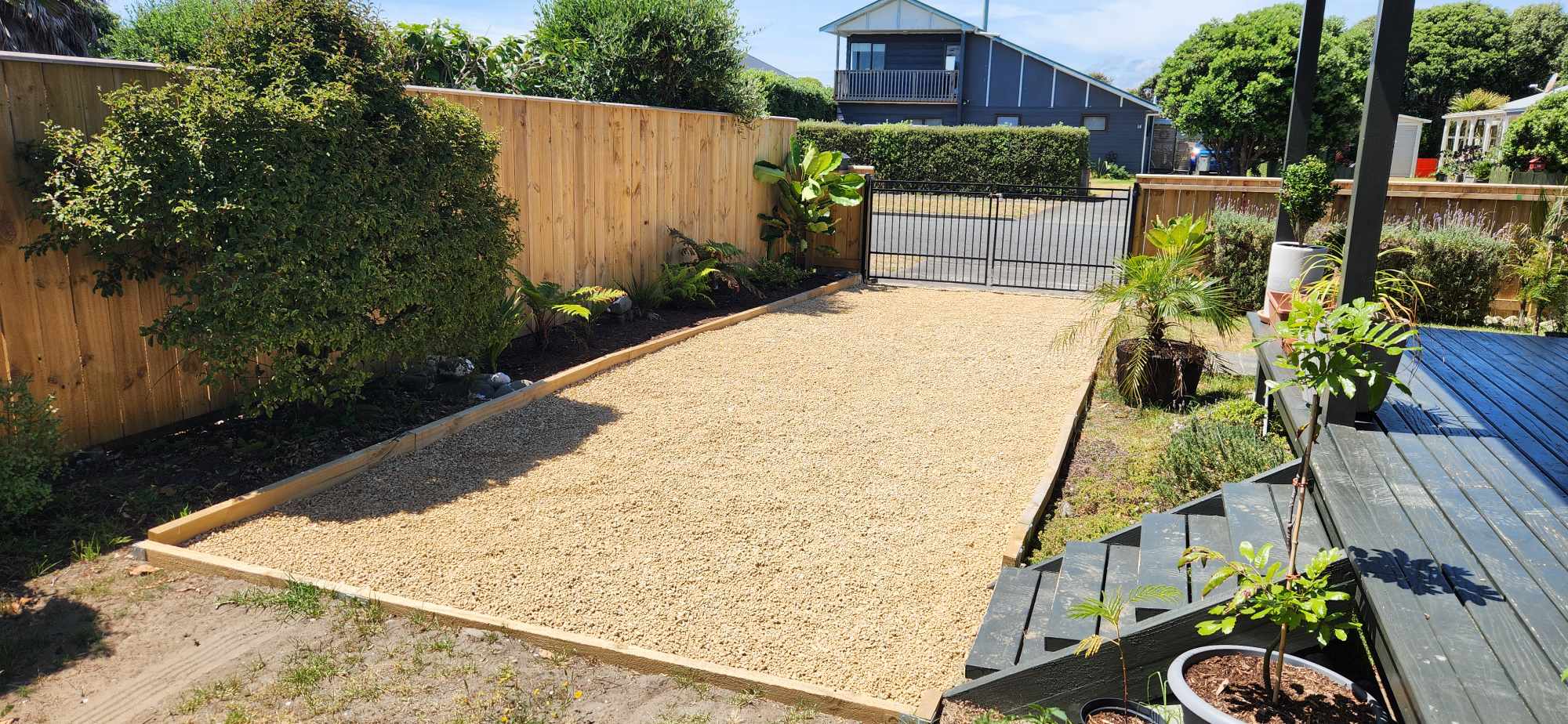
Getting Started: What You Need to Know
Designing a new driveway, or upgrading an existing one, is a chance to do more than just fix a surface. It’s an opportunity to make thoughtful decisions that balance form, function and sustainability. Whether you’re a homeowner, landscape designer or builder, taking time to consider the core aspects of the design will help ensure a result that performs well over time and fits seamlessly into the surrounding landscape.
Aesthetics
First impressions count. Your driveway is often the first feature people see, so its appearance should complement your home and landscape. Consider whether you want a natural look with gravel or grass, a modern clean-lined finish, or something more traditional. Materials like PebbleLock and SurePave provide flexibility, meaning you can customise your surface finish while still achieving practical outcomes.
Water Management and Drainage
With changing weather patterns and more intense rainfall events, managing water flow is critical. Driveways that don’t handle water well can cause localised flooding, erosion, or long-term damage to surrounding areas, as well as your property. A good design will include permeable surfaces, fall direction (slope), and drainage planning to move or absorb water safely and naturally. Consider where the water will go; can it soak into the ground, or will it overwhelm nearby drains?
Functionality and Practicality
Think about how the space will be used to incorporate daily vehicle access, turning areas, foot traffic or even overflow parking. Materials need to match those functions. SurePave, for example, is suitable for heavier vehicle use or stabilised grassed areas, while PebbleLock is ideal for decorative or light vehicle use areas. Also consider accessibility, surface grip in wet conditions, and how the driveway integrates with paths, lawns, or garden beds.
Initial Cost vs. Ongoing Maintenance
It’s easy to focus on upfront cost, but a cheaper installation may result in higher maintenance or repair bills down the track. Materials like asphalt may be less expensive at the start but can deteriorate quickly and require patching. Permeable paving may involve slightly more preparation, but it’s durable, low-maintenance, and easy to repair in small sections without having to replace the whole surface. Over time, this balance can result in real savings, not to mention fewer disruptions.
What to Look For
When planning your driveway, look for a design that doesn’t just repel water but actively manages it through smart drainage or permeable elements. Choose surfaces that enhance your home’s style and landscape vision while also standing up to the demands of daily use. The materials you select should be suited to the load they’ll carry, whether it’s regular vehicle traffic, occasional parking, or pedestrian access. Favour products that offer durability and require minimal upkeep, helping you save time and money in the long run. And importantly, think about how your driveway ties into the wider outdoor space, whether it flows into paths, garden beds, or lawn, and how adaptable it will be to changes in your landscape or lifestyle over time.
- Assess your driveway’s condition and specific requirements before starting a project.
- Consult professionals to explore suitable materials and designs.
- Consider durability, maintenance, and environmental impact when selecting materials.
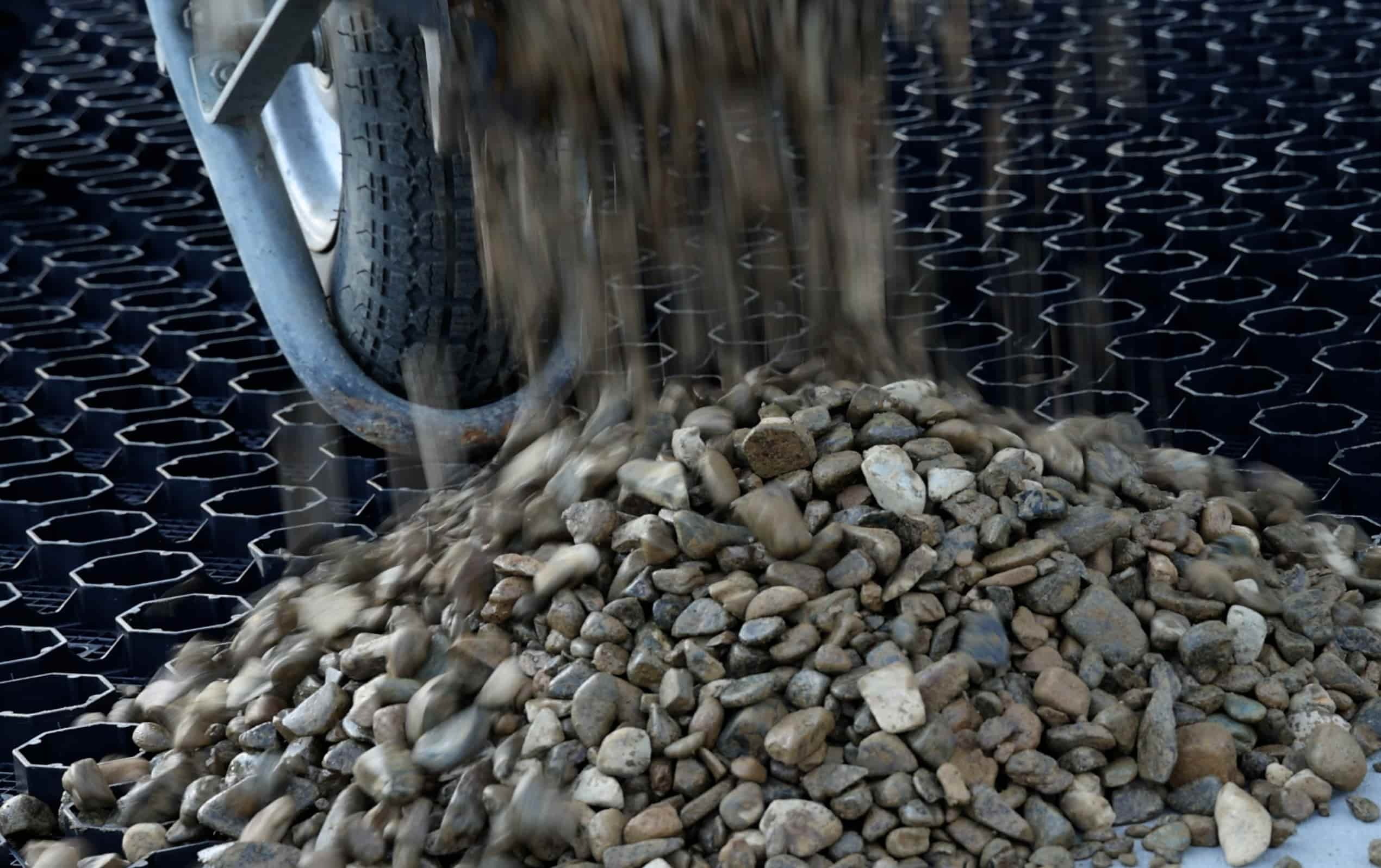
The Strol Advantage
At Strol, we’re dedicated to helping New Zealanders create smarter, more sustainable outdoor spaces; driveways included. Our range of permeable paving products, including PebbleLock and SurePave, is designed with both the environment and real-world performance in mind. Whether you’re building new or upgrading what you already have, we offer solutions that are practical, good-looking and built to last.
We believe that sustainability shouldn’t come at the expense of style or simplicity. That’s why our products are easy to install, low-maintenance, and flexible enough to suit a wide range of designs and site conditions. Whether you’re a homeowner wanting to improve water flow or a builder looking for long-term durability, Strol products can be adapted to meet your needs, while helping you create spaces that truly enhance tomorrow.
Our dedicated team is just a phone call away, and we’re here to help you make informed choices about what’s right for your home, your landscape, and your goals. From product advice to design considerations, we’re proud to support you at every step of your project.
Explore our range of permeable paving solutions and discover how our products can enhance your outdoor space. Visit our website or contact us today to learn more and take the first step towards a driveway that combines functionality, aesthetics, and environmental responsibility.


